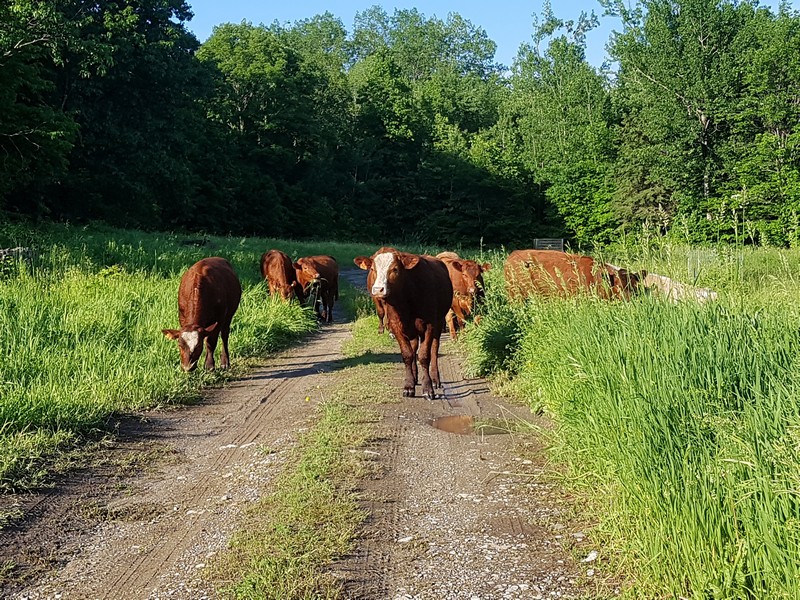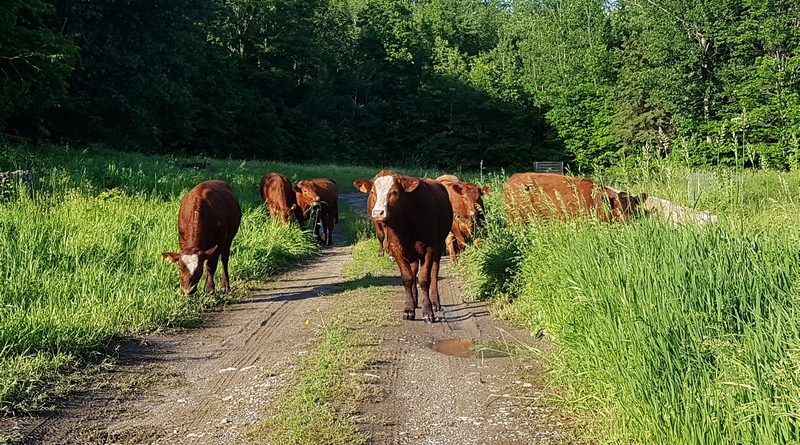Coming soon from a home near you: grass-fed beef
Dodi Newman
Have you ever had grass-fed beef? I have: it came from the Argentine pampas and was superb. That was many years ago. When I learned that one of our neighbours is raising beef cattle by this method, I was happy to have it available from such a local source.

That neighbour is Craig Anderson. He and his family live mostly on Blackburn Avenue in Sandy Hill, but are at their 150 acre farm near Low, Québec, whenever possible. Craig strives to live and farm in an ecologically sustainable way. This year, he began to apply his principles to beef farming by finishing cattle on his pastures. He buys 12 to 15 month old cattle in May or June, and grows them to finished weight some six months later.
Cattle farmer Craig Anderson and his family live mostly on Blackburn Ave. in Sandy Hill.
While they are in Craig’s care, his cattle feed on grass or hay, which is natural for them. Their only supplements are blocks of salt and minerals. For Craig’s cattle – mostly Red Angus, a variant of Black Angus – there are no feedlots: no soybeans, no corn, and no growth hormones. If you are a cow, this is the good life, wandering the pastures, eating grass, and having lots of elbow room. Craig’s cattle thrive on this regime; antibiotics have not been necessary.
The beef in grocery stores mostly comes from cattle finished on feedlots. Life there is very different from living on pastureland, and nothing on a feedlot is natural for cows. The feed they get causes them to suffer from bloat and acidosis. There is no elbow room and, instead of grass underfoot, there is an unimaginable amount of excrement. All this is neither good nor healthy for them, and in consequence there are also lots of antibiotics.
Anthelme Brillat-Savarin famously wrote in 1826, “Tell me what you eat and I’ll tell you what you are.” This is true of cows as well as of people. Whatever beef cattle eat, I ultimately eat. To me, grassfed beef tastes and feels fresher, more interesting. Maybe it is because their food is healthier; maybe it is the flavour of grasses and herbs coming through?
How do you cook with beef like that? Since it is leaner than conventional beef, grass-fed beef may not be as tender. Craig’s cardinal rule is, “Don’t overwhelm the meat with spices and above all, don’t overcook it. Grill it lightly or braise it gently, bring out its natural flavour with the right amount of salt. By all means, add some butter or olive oil. Do not waste it on hot curries!” I, for one, can’t wait to cook with it!
If you want to know more about Craig’s farm or his beef, check out his very interesting website, sunshinesaved.com, or email him at craigdonavinanderson@gmail.com.

